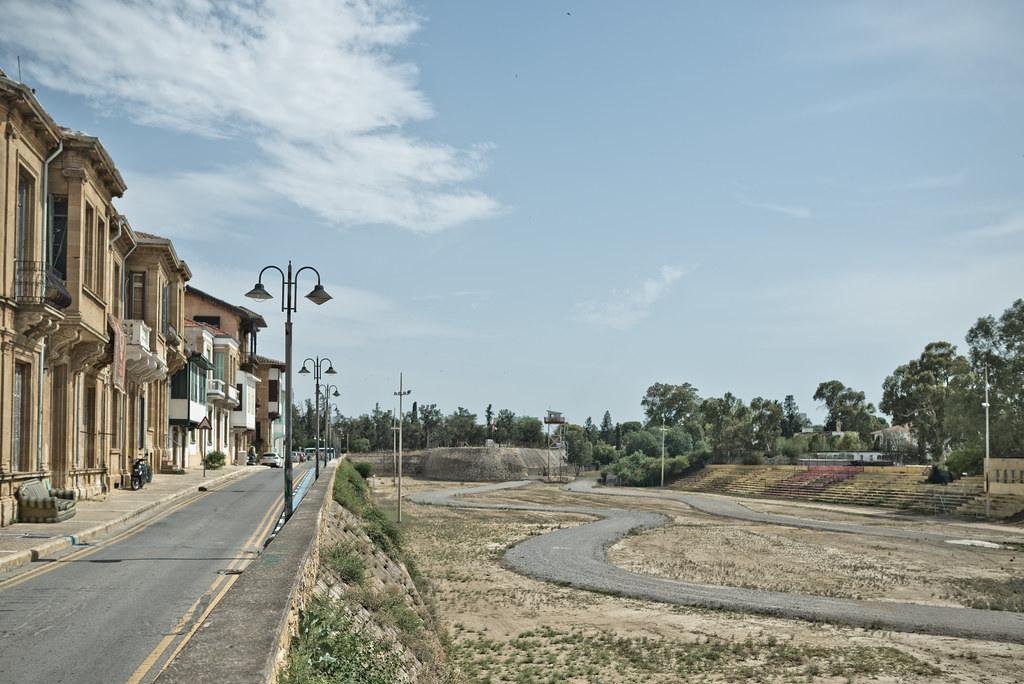
Cyprus is known for its beauty and culture, a tourist hotspot attracting groups from all over the world — yet throughout this seemingly blissful island is an underlying tension. The island is split between a Greek Cypriot (mostly Christian Orthodox) majority in the southern part and a Turkish Cypriot (mostly Muslim) minority in the north. This separation is cultural and geographical, with a 180-kilometre-long UN-controlled buffer zone dividing the north from the south. This buffer zone divide includes Cyprus’ capital of Nicosia.
The political divides within Cyprus started long before the Turkish invasion in 1974. Britain’s annexation of Cyprus in 1914 was the start of the Greek Cypriots’ quest for enosis with Greece. Cyprus gained independence in 1960 and — with help from the Greek and Turkish governments — formed a constitution. However, the seeds of nationality had been sown…The Greek Cypriots proposed multiple changes to the constitution, which the Turkish government rejected — leading to its suspension. Following the Turkish occupation of northern Cyprus in 1974, 180,000 Greek Cypriots were displaced and fled south. By 1975, an independent Turkish Cypriot state was formed in the northern third of the island. However, this Turkish Cypriot state is only recognised as a legal state by the Turkish government, with the southern Greek Cypriots being the only internationally recognised government of Cyprus.
In the years since the formation of the two states, both the Greek and Turkish sides have pushed on with their development. The Greek Cypriot government reinstated a practicable version of the constitution that leaves open the House of Representative seats designated to the Turkish Cypriots. Although the UN has stationed peacekeeping troops in Cyprus, both sides maintain a national military service — the Greek Cypriots through conscripts and volunteers, and the Turkish Cypriots through national service. The Greek Cypriot side developed a bustling tourist industry and pushed for greater economic security through attempts to join the European Union (EU). This attempt to join the EU became a bargaining chip that re-opened reunification talks — however, these failed and Greek Cyprus entered the EU alone in 2004. Unfortunately, in 2011 Cyprus was hit by the euro-zone debt crisis, forcing them to accept help from the IMF and EU. This assistance was slowed because of President Christofias’ reluctance to implement bank reform and privatisation. Under the subsequent leadership of Nicos Anastasiades, this was moved along.
The issue of unification has monopolised Cypriot politics since the Turkish invasion. Initially, the Turkish Cypriots seemed to support reunification. Following a referendum on both sides of the border in 2004, a majority of Turkish Cypriots voted for reunification and the Greek Cypriot majority against. There seemed to be a period of reduced tensions when both sides decided to open a crossing on Ledra Street in Nicosia in 2008, which was a more active approach to reunification that was continued with talks under Anastasiades.
These talks fell apart in 2017 and the tensions over a natural gas reserve discovered in 2011 reached an all time high. Cyprus took charge of these reserves mere days after the talks fell through and first allowed oil company Total Group to drill, later allowing Eni to drill in February 2018. Turkey took issue with Cyprus’ monopolisation of the gas reserve and sent warships to intervene in the situation — furthering this interference after Cyprus also allowed Exxon Mobil Corporation to begin drilling later that year. In January 2019, Turkey announced plans to start drilling near Cyprus. The EU’s reaction to Turkey’s drilling was fast and concise, placing sanctions upon the country — with the UK continuing these sanctions even after leaving the EU. The disagreement came to a head in August 2020 with a collision between Greek and Turkish naval ships after Turkey had started drilling in close proximity to the Greek islands — this event placed more strain on the already broken relationship. The Turkish Cypriot leader Ersin Tatar inflamed the conflict when he called for the opening of the former tourist town Varosha, leading to international backlash and the collapse of the Turkish Cypriot cabinet after the coalition broke down.
Despite these conflicts, there may still be a chance to reunify the island. After previously failed talks in September 2021, Tatar asked the UK to help him set up fresh talks in January 2022. The attempts by both sides at reconciliation in recent years show a change in attitude, presenting an optimistic projection of the future. These talks so far, however, have failed to create change due to Tatar’s insistence that the Turkish Cypriots would only accept reunification on the condition that the UN and the international sphere accepted the legitimacy of the Turkish Cypriot republic. Both the Turkish and Turkish Cypriot governments have stagnated the situation through Tatar’s insistence on a ‘two-state solution’ which would formalise the island’s divide.
There is still hope for future talks of reunification, despite Turkish President Erdoğan cutting ties with Greek Prime minister Mitsotakis in May 2022 after accusing him of bringing the US into the conflict. Reunification will not occur without the help of the international community aiding with talks and furthering communication — not only between the two halves of Cyprus but also between Turkey and Greece.
Featured image: ‘The Green Line in Nicosia (Cyprus)‘ by Marco Fieber from Flickr is licensed under CC BY-NC-ND 4.0.



Average Rating